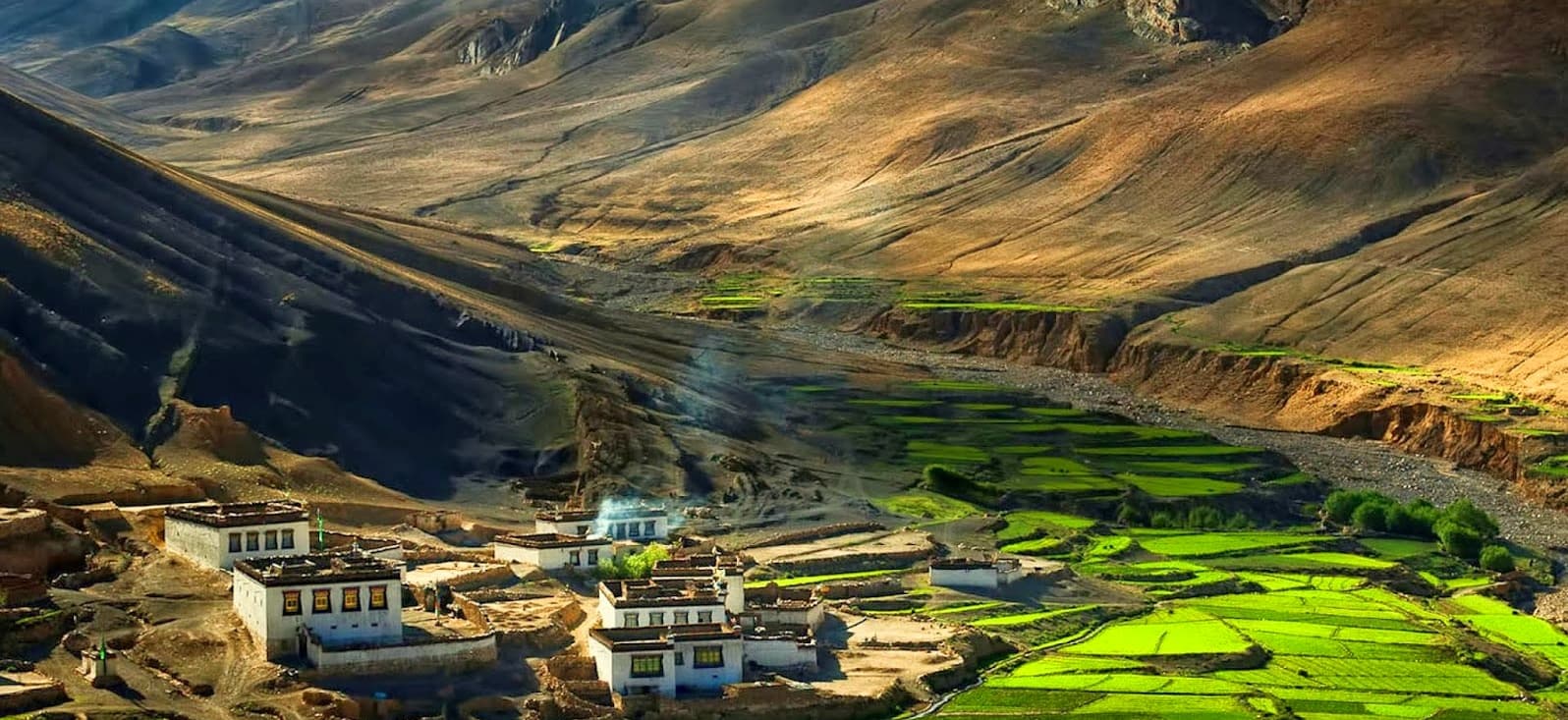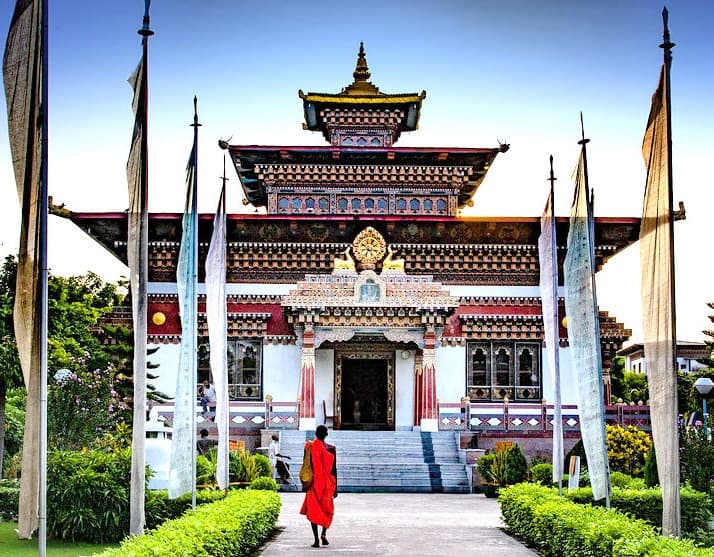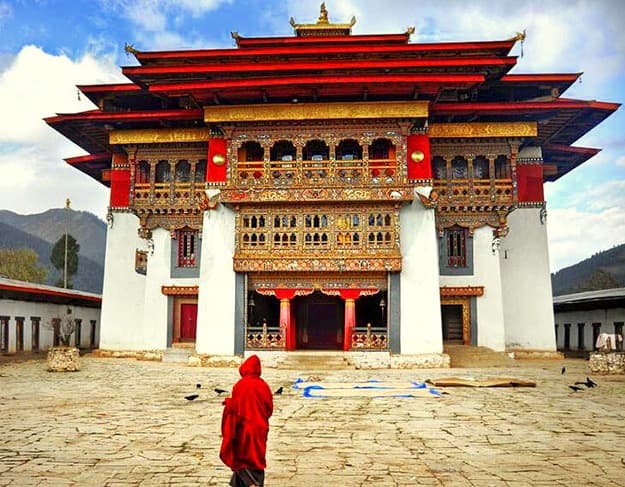- Essential Travel Permits for Tibet
- Best Time to Visit Tibet
- Altitude Sickness Tips for Tibet
- Packing Essentials for Tibet
- Cultural Etiquette in Tibet
- Travel Safety Tips for Tibet
- Currency and Payments in Tibet
- Comprehensive Travel Guide for Tibet
- FAQs of Tibet Travel Tips: What You Need to Know Before You Go
Planning a trip to Tibet is a unique adventure that requires thoughtful preparation and awareness of local customs. This Tibet travel guide provides essential Tibet travel tips to ensure you’re fully prepared for the journey. Understanding what to know before visiting Tibet, such as the necessary travel permits for Tibet, how to prevent altitude sickness, and the best time to visit Tibet, will help you make the most of your trip. With careful Tibet trip preparation and awareness of Tibet travel safety tips, you’ll be ready to explore the breathtaking landscapes and rich cultural heritage that make Tibet a truly extraordinary destination.
At Druk Holidays, we pride ourselves on being the best company to guide you through your journey to Tibet. With our expert knowledge and personalized service, we ensure you have all the essential Tibet travel tips and insights on what to know before visiting Tibet. From securing the necessary travel permits for Tibet to offering advice on Tibet altitude sickness tips and the best time to visit Tibet, we cover every detail to make your trip seamless and unforgettable. Our comprehensive Tibet travel guide and meticulous Tibet trip preparation ensure that you’re well-equipped for this incredible adventure, making us the top choice for travelers seeking an authentic and enriching experience in Tibet.
Essential Travel Permits for Tibet
When planning a trip to Tibet, obtaining the necessary Tibet travel permits and visas is a crucial step. Here’s what you need to know:
- Tibet Travel Permit: Also known as the Tibet Entry Permit, this is mandatory for all foreign travelers entering Tibet. Issued by the Tibet Tourism Bureau, this permit is required for boarding flights or trains to Tibet and must be carried at all times during your stay.
- Chinese Visa: Before applying for the Tibet Travel Permit, you must first obtain a Chinese visa. This visa is typically acquired from Chinese embassies or consulates in your home country.
- Alien Travel Permit: If you plan to visit restricted areas outside of Lhasa, such as Mount Everest Base Camp or Shigatse, you’ll need an Alien Travel Permit. This permit is arranged once you’re in Tibet and is usually handled by your tour operator.
- Military Permit: For travel to military-sensitive areas, such as Ngari, Nyingchi, or certain parts of eastern Tibet, a Military Permit is required. This permit is also arranged by your tour operator, typically in conjunction with the Alien Travel Permit.
Securing these travel permits for Tibet well in advance is essential to ensure a smooth and worry-free journey. Working with a trusted tour operator can simplify the process, allowing you to focus on enjoying your adventure in this breathtaking region.
Best Time to Visit Tibet
The best time to visit Tibet largely depends on what you want to experience, but the most favorable periods are spring (April to June) and autumn (September to October). During these months, the weather is mild, the skies are clear, and the landscapes are at their most vibrant, making it ideal for sightseeing and trekking.
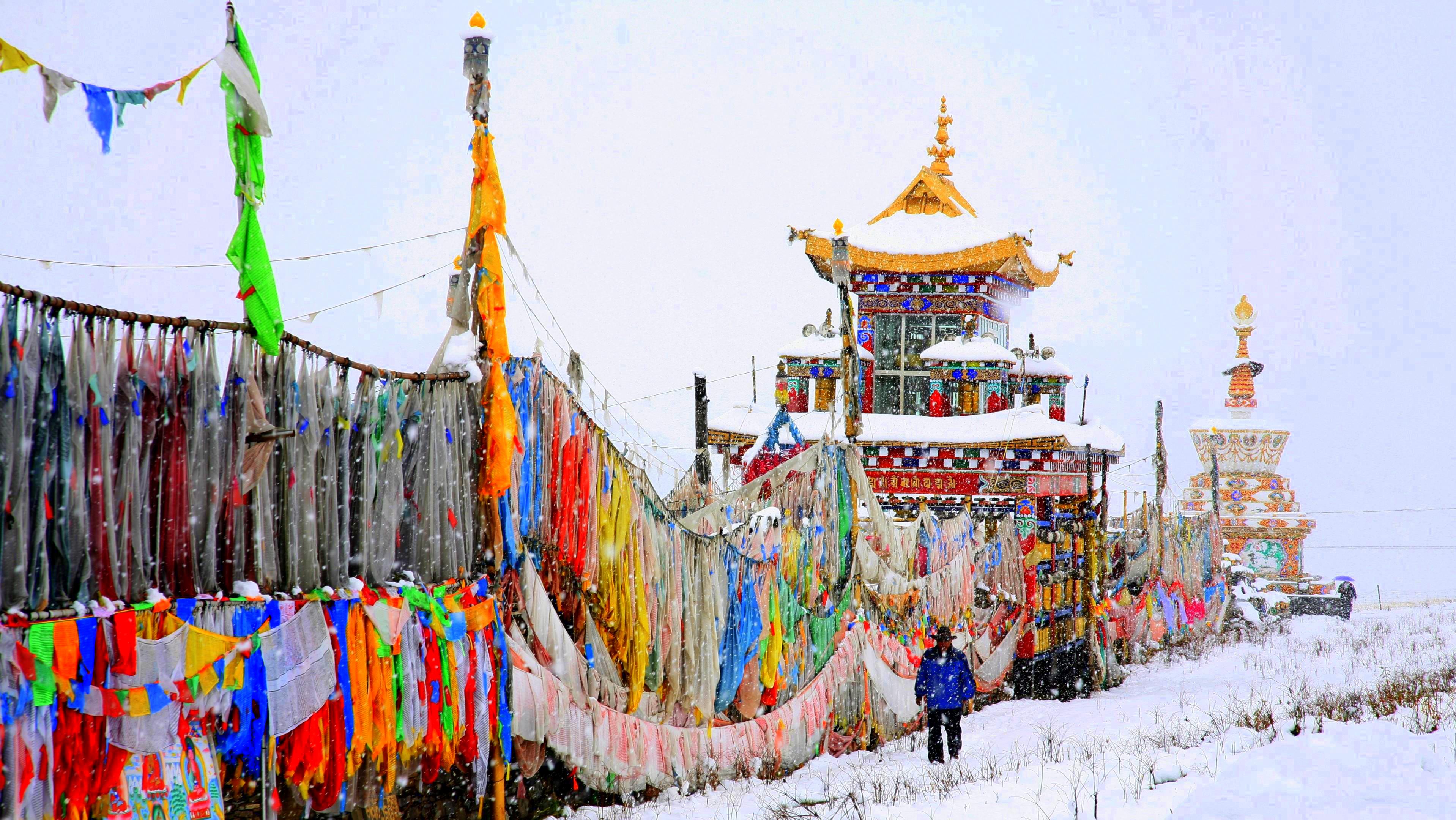
- Spring (April to June): This is a fantastic time to witness the blooming flowers and lush green valleys. The weather is comfortable, with temperatures ranging from 10°C to 20°C (50°F to 68°F), making it perfect for exploring Tibet's cultural sites and enjoying outdoor activities.
- Autumn (September to October): Autumn offers cool and crisp weather with fewer tourists. The clear skies provide stunning views of the Himalayas, and the colorful foliage adds to the beauty of the region. Temperatures during this season are similar to spring, making it another great time for trekking and photography.
- Summer (July to August): While summer is the peak tourist season, it also coincides with the monsoon season. Expect occasional rain, but also enjoy warmer temperatures. This season is ideal for visiting northern Tibet, where the landscapes are vast and green.
- Winter (November to March): Winter in Tibet is cold, with temperatures often dropping below freezing. However, this is the off-peak season, meaning fewer crowds and lower prices. While some remote areas may be inaccessible due to snow, it’s a peaceful time to explore Lhasa and experience Tibetan festivals.
By choosing the best time to visit Tibet based on your preferences, you’ll ensure an unforgettable and comfortable journey through this extraordinary destination.
Altitude Sickness Tips for Tibet
Traveling to Tibet means journeying to some of the highest elevations in the world, which can pose challenges for those not accustomed to high altitudes. Here are essential Tibet altitude sickness tips to help you stay healthy and enjoy your adventure:
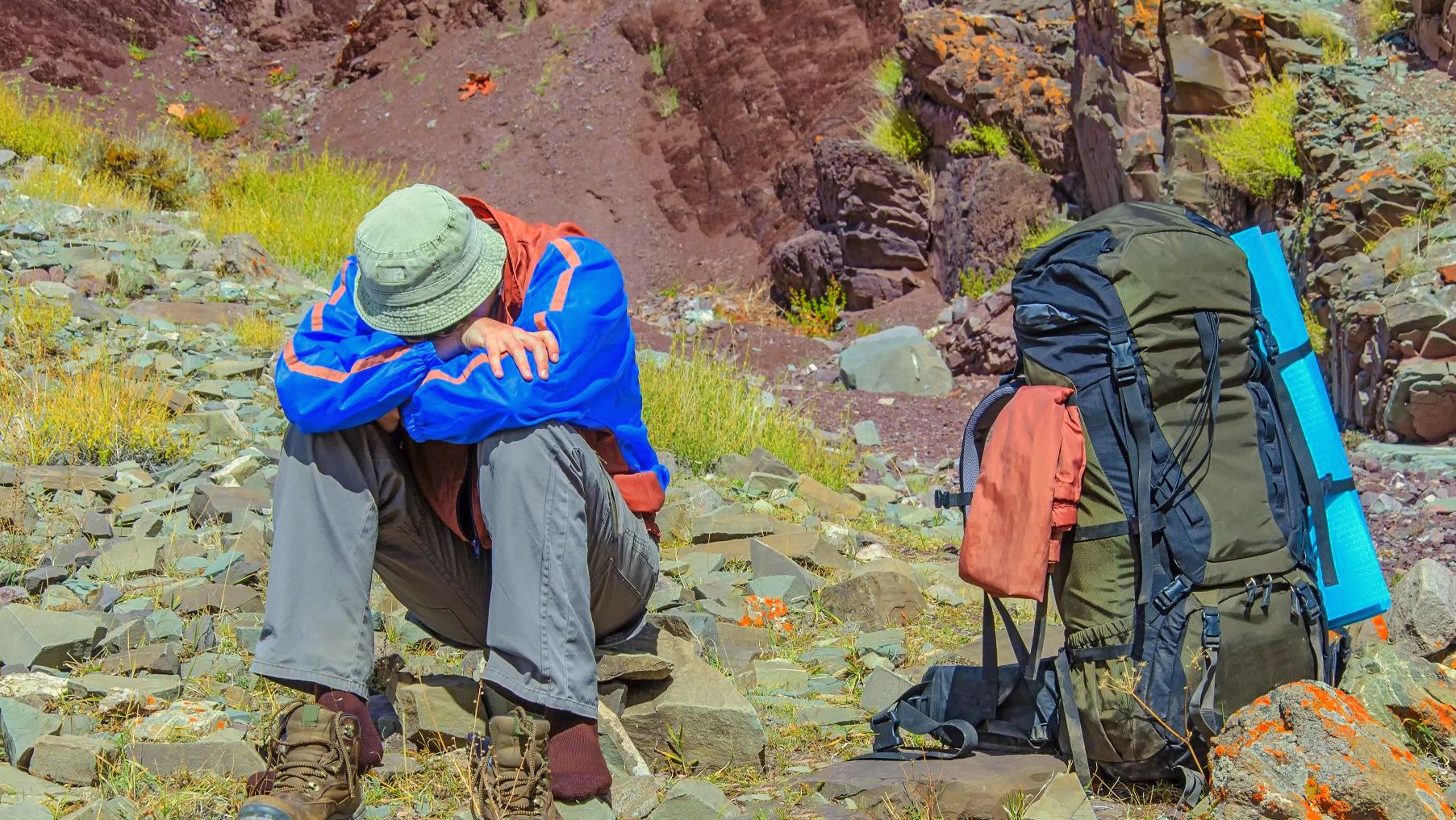
- Acclimate Gradually: The best way to prevent altitude sickness is to ascend slowly, giving your body time to adjust. Spend a few days in lower-altitude areas like Lhasa (3,650 meters/11,975 feet) before moving to higher regions.
- Stay Hydrated: Dehydration can exacerbate symptoms of altitude sickness. Drink plenty of water throughout the day, and avoid alcohol and caffeine, which can dehydrate you further.
- Rest and Avoid Overexertion: During the first few days, take it easy. Avoid strenuous activities like trekking or heavy physical exertion until you’ve acclimated. Listen to your body—rest if you feel fatigued.
- Eat Light and Nutritious Meals: Your body uses more energy at high altitudes, so eat small, frequent meals rich in carbohydrates to maintain energy levels. Avoid heavy, greasy foods that are harder to digest.
- Medications: Consider speaking with your doctor before your trip about medications like acetazolamide (Diamox), which can help prevent and reduce the symptoms of altitude sickness. Carry any necessary medications with you, as pharmacies may be limited in remote areas.
- Recognize Symptoms Early: Common symptoms of altitude sickness include headaches, dizziness, nausea, shortness of breath, and fatigue. If you experience any of these, it’s crucial to rest, drink fluids, and avoid going higher until symptoms subside.
- Use Oxygen if Needed: Many hotels and tour operators in Tibet provide oxygen bottles or have oxygen available. If symptoms persist or worsen, use supplemental oxygen and consider descending to a lower altitude.
- Know When to Seek Help: If symptoms of altitude sickness become severe—such as persistent headaches, vomiting, confusion, or difficulty breathing—descend immediately and seek medical attention.
By following these Tibet altitude sickness tips, you can reduce the risk of illness and enjoy the breathtaking landscapes and cultural experiences that Tibet has to offer.
Packing Essentials for Tibet
Preparing for a trip to Tibet means being ready for diverse weather conditions, high altitudes, and remote locations. Here's a guide to the packing essentials for Tibet that will ensure you're well-prepared for this unique adventure:
- Clothing Layers: Tibet's weather can change rapidly, so packing layers is crucial. Include moisture-wicking base layers, a warm fleece, and a waterproof jacket. A down jacket is essential for the colder mornings and evenings, especially if you're visiting higher altitudes or traveling during the winter months.
- Comfortable Footwear: A sturdy pair of trekking shoes or boots is a must, especially if you plan on hiking or exploring remote areas. Make sure they’re broken in before your trip. Also, pack a pair of comfortable shoes or sandals for walking around towns and monasteries.
- Sun Protection: The sun in Tibet is strong, particularly at high altitudes, so bring a wide-brimmed hat, sunglasses with UV protection, and high-SPF sunscreen. Lip balm with SPF is also important to protect your lips from the dry and sunny conditions.
- Reusable Water Bottle: Staying hydrated is key to preventing altitude sickness, so carry a reusable water bottle. Many places in Tibet have refill stations, and you can also use water purification tablets or a filter for safe drinking water.
- First-Aid Kit: A basic first-aid kit is essential, including band-aids, antiseptic wipes, pain relievers, and any personal medications. Don’t forget altitude sickness medication and remedies for common travel ailments like digestive issues.
- Travel Documents: Ensure you have all your Tibet travel permits and visas organized, along with your passport, travel insurance, and copies of important documents. Keep these in a waterproof pouch for added protection.
- Camera and Extra Batteries: Tibet’s landscapes are stunning, so bring a good-quality camera to capture the moments. Also, pack extra batteries and memory cards, as these might be hard to find in remote areas.
- Snacks and Energy Bars: Pack some high-energy snacks like nuts, dried fruit, and energy bars. These can be handy for long journeys or when you need a quick boost while trekking.
- Power Adapter and Power Bank: Tibet uses the standard Chinese plug (Type A, C, or I), so bring an appropriate power adapter. A power bank is also essential for keeping your devices charged, especially in remote areas where electricity might be limited.
- Personal Hygiene Items: In addition to your usual toiletries, pack items like hand sanitizer, wet wipes, and a travel towel. These are particularly useful when facilities are basic or when you're on the move.
By packing these essentials for Tibet, you’ll be well-prepared to face the challenges of traveling in this high-altitude, remote region, allowing you to focus on the incredible experiences that await you.
Cultural Etiquette in Tibet
Understanding and respecting local customs is essential when traveling in Tibet, a region deeply rooted in spiritual traditions and unique cultural practices. Here are key points of cultural etiquette in Tibet to ensure a respectful and enjoyable visit:
- Dress Modestly: Tibetans value modesty in dress. When visiting monasteries or religious sites, wear long sleeves and cover your legs. Avoid wearing revealing clothing and be mindful of local norms, which prioritize respectful attire.
- Respect Religious Practices: Tibet is predominantly Buddhist, and religious practices are integral to daily life. Always walk clockwise around religious structures like stupas, prayer wheels, and monasteries. When entering monasteries, remove your hat and shoes, and follow any additional instructions given by monks or staff.
- Ask Before Taking Photos: Photography can be sensitive, especially in religious sites and among local people. Always ask for permission before taking photos of individuals or religious ceremonies. In some areas, photography might be prohibited, so look for signs and follow local guidelines.
- Greeting Locals: A traditional Tibetan greeting involves placing your palms together in a prayer-like gesture and bowing slightly. This is a sign of respect and can be used when meeting locals or in religious contexts. A smile and a respectful attitude go a long way.
- Handling Religious Items: When handling religious objects or artifacts, such as prayer flags, books, or statues, use your right hand or both hands, and handle them gently. Avoid touching the sacred items unnecessarily, and do not place them on the ground.
- Show Respect for Traditions: Be mindful of local customs and traditions, such as during religious festivals and ceremonies. Avoid engaging in behavior that might be considered disrespectful, such as loud talking or disruptive actions.
- Respect Local Beliefs: Tibetans hold their spiritual beliefs in high regard. Avoid discussing sensitive political issues, and show respect for local traditions and customs, even if they differ from your own.
- Offer and Receive with Both Hands: When giving or receiving something, such as gifts or money, use both hands as a sign of respect. This practice is deeply appreciated and demonstrates your acknowledgment of Tibetan customs.
- Avoid Public Displays of Affection: Public displays of affection are uncommon and considered inappropriate in Tibetan culture. Maintain a respectful distance and avoid gestures that might be seen as disrespectful.
- Respect Local Customs in Rural Areas: In more remote or rural areas, traditional customs may be even more pronounced. Be extra mindful of local practices and show deference to the ways of life in these regions.
By adhering to these cultural etiquette guidelines, you’ll demonstrate respect for Tibetan traditions and enhance your travel experience, allowing you to connect more deeply with the local culture and people.
Travel Safety Tips for Tibet
Ensuring your safety while traveling in Tibet involves preparation and awareness. Here are essential Tibet travel safety tips to help you stay secure and enjoy your journey:
- Travel with a Reputable Tour Operator: Choose a trusted tour operator with experience in organizing trips to Tibet. This ensures that you have reliable support and guidance, especially when traveling to remote or restricted areas.
- Be Prepared for Altitude Challenges: Acclimate gradually to avoid altitude sickness. Spend a few days at lower altitudes before ascending to higher elevations. Carry altitude sickness medication and follow Tibet altitude sickness tips to manage symptoms effectively.
- Stay Informed About Local Conditions: Before traveling, check the latest travel advisories and local news. Conditions in Tibet can change due to weather, political events, or other factors. Staying informed helps you avoid any potential risks.
- Keep Your Documents Safe: Store your Tibet travel permits and visas, passport, and other important documents in a secure place. Make photocopies or digital backups and keep them separate from the originals. This will help in case of loss or theft.
- Follow Local Regulations and Guidelines: Adhere to all local laws and regulations, including those related to travel permits and restricted areas. Always follow instructions provided by your tour guide or local authorities to avoid any legal issues.
- Be Cautious with Personal Belongings: Tibet is generally safe, but like in any travel destination, keep an eye on your personal belongings. Use anti-theft bags and keep valuables like passports and money secure.
- Health Precautions: Carry a basic first-aid kit and any personal medications you might need. Familiarize yourself with the nearest medical facilities in the areas you plan to visit, especially if you have specific health concerns.
- Respect Cultural and Religious Sites: Follow the cultural etiquette in Tibet when visiting religious and cultural sites. This not only shows respect but also helps prevent misunderstandings or conflicts.
- Avoid Political and Social Unrest: Stay away from demonstrations or political gatherings, as they can be unpredictable and may pose safety risks. Respect local sensitivities and avoid discussing controversial topics.
- Prepare for Weather Conditions: Tibet's weather can be extreme, especially at higher altitudes. Dress in layers and be prepared for sudden changes in weather. Ensure you have adequate clothing and gear to stay warm and dry.
By following these Tibet travel safety tips, you can minimize risks and focus on enjoying the stunning landscapes and rich cultural experiences that Tibet has to offer.
Currency and Payments in Tibet
Understanding currency and payments in Tibet is essential for managing your finances smoothly during your trip. Here’s what you need to know:
- Currency: The official currency in Tibet is the Chinese Yuan (CNY), also known as Renminbi (RMB). All financial transactions will be conducted in this currency.
- Currency Exchange: Exchange your currency for Chinese Yuan before arriving in Tibet, as exchange services might be limited in more remote areas. Major cities like Lhasa have currency exchange facilities, but it’s best to have some local currency on hand from the start.
- ATMs and Cash: ATMs are available in larger towns and cities, including Lhasa, Shigatse, and Gyantse. However, access to ATMs in remote areas may be limited, so it’s advisable to carry sufficient cash for your needs, especially when traveling to rural regions.
- Credit and Debit Cards: Credit cards are accepted in larger establishments, such as hotels, restaurants, and shops in major cities. Visa and MasterCard are the most commonly accepted, but always confirm before making a purchase. In more remote areas, you’ll likely need to rely on cash.
- Payment Apps: While payment apps like Alipay and WeChat Pay are popular in China, their usage might be limited in Tibet, especially in less developed areas. It’s safest to carry cash and use credit/debit cards in cities where they are accepted.
- Handling Cash: When carrying cash, keep it secure and in a safe place. Consider using anti-theft money belts or pouches. Avoid displaying large amounts of cash in public to reduce the risk of theft.
- Budgeting: Prices in Tibet can vary significantly depending on the location. Major cities may have higher costs, while more remote areas might offer lower prices but fewer amenities. Budget accordingly and plan for potential additional expenses in less accessible regions.
By understanding the currency and payments in Tibet, you’ll be well-prepared to manage your finances effectively and enjoy a smooth, worry-free travel experience.
Comprehensive Travel Guide for Tibet
Exploring Tibet is a journey of a lifetime, filled with awe-inspiring landscapes and rich cultural experiences. Here’s a comprehensive Tibet travel guide to help you prepare and make the most of your adventure:
Travel Permits and Visas:
- Chinese Visa: Obtain a Chinese visa from a Chinese embassy or consulate before traveling. This is a prerequisite for applying for the Tibet Travel Permit.
- Tibet Travel Permit: Essential for all foreign visitors. Apply through a registered tour operator in China, as individual applications are not accepted.
- Alien Travel Permit: Required for traveling to restricted areas outside Lhasa. Arranged by your tour operator.
- Military Permit: Necessary for travel to military-sensitive regions, arranged in conjunction with the Alien Travel Permit.
Best Time to Visit:
- Spring (April to June) and Autumn (September to October) are ideal for clear weather and pleasant temperatures.
- Summer (July to August), while warmer, can bring occasional rain.
- Winter (November to March) is cold but offers fewer crowds and lower prices.
Altitude Sickness:
- Acclimate Gradually: Spend a few days at lower altitudes before heading higher.
- Stay Hydrated: Drink plenty of water and avoid alcohol and caffeine.
- Rest and Medications: Avoid strenuous activities and carry altitude sickness medications if advised by your doctor.
Packing Essentials:
- Clothing: Layered clothing, including thermal base layers, a warm jacket, and waterproof gear.
- Footwear: Sturdy trekking boots and comfortable walking shoes.
- Health and Safety: Basic first-aid kit, personal medications, and sun protection (hat, sunglasses, sunscreen).
Cultural Etiquette:
- Dress Modestly: Cover your arms and legs, especially when visiting religious sites.
- Respect Traditions: Follow local customs in monasteries and avoid sensitive topics.
- Photography: Ask for permission before photographing people or religious sites.
Currency and Payments:
- Currency: Use Chinese Yuan (CNY). Exchange currency before arriving or at major cities.
- ATMs and Cards: Available in larger towns; carry cash for rural areas. Credit cards are accepted in major establishments.
Travel Safety:
- Stay Informed: Check travel advisories and local news.
- Keep Documents Safe: Secure your travel permits, passport, and other important documents.
- Health Precautions: Know the location of medical facilities and carry necessary medications.
Local Transportation:
- Flights and Trains: Major cities like Lhasa are accessible by flight or train from other parts of China.
- Local Transport: Taxis, buses, and rented vehicles are available for getting around.
Food and Drink:
- Cuisine: Enjoy local Tibetan dishes like momo (dumplings) and tsampa (barley flour). Be cautious with street food and ensure that food is well-cooked.
- Water: Drink bottled or purified water to avoid gastrointestinal issues.
Communication:
- Language: Tibetan and Mandarin are the primary languages. English is not widely spoken, so having a phrasebook or guide can be helpful.
- Internet and Mobile: Internet access is available in major cities, but connectivity might be limited in remote areas. Mobile service is generally reliable in urban areas.
By following this comprehensive travel guide for Tibet, you’ll be well-prepared to navigate the unique challenges and fully embrace the extraordinary beauty and culture of this remarkable region.
Traveling to Tibet offers a unique and transformative experience, but it requires thoughtful preparation. By following the essential Tibet travel tips outlined here, including securing the necessary travel permits for Tibet, planning your visit during the best time to visit Tibet, and managing altitude sickness, you’ll be well-equipped for a smooth adventure. Understanding cultural etiquette, handling currency and payments, and adhering to travel safety tips will enhance your experience, allowing you to fully appreciate Tibet’s stunning landscapes and rich cultural heritage. With these insights, you’re prepared for a remarkable journey through Tibet, ensuring an unforgettable and enriching adventure.
FAQs of Tibet Travel Tips: What You Need to Know Before You Go
Q: What are the essential travel permits needed for Tibet?
A: To travel to Tibet, you need several permits: a Chinese visa, a Tibet Travel Permit, an Alien Travel Permit for restricted areas, and a Military Permit if visiting military-sensitive regions. These permits are usually arranged through a registered tour operator.
Q: When is the best time to visit Tibet?
A: The best time to visit Tibet is during spring (April to June) and autumn (September to October). These seasons offer mild weather, clear skies, and vibrant landscapes. Summer (July to August) is warmer but can be rainy, while winter (November to March) is cold but less crowded.
Q: How can I prevent altitude sickness in Tibet?
A: To prevent altitude sickness, acclimate gradually by spending a few days at lower altitudes before moving higher. Stay hydrated, avoid alcohol and caffeine, and consider carrying altitude sickness medication. Rest and avoid strenuous activities until your body adjusts.
Q: What should I pack for a trip to Tibet?
A: Pack layered clothing to adapt to varying temperatures, including thermal base layers, a warm jacket, and waterproof gear. Essential items also include comfortable footwear, a first-aid kit, sun protection (hat, sunglasses, sunscreen), and a reusable water bottle.
Q: What cultural etiquette should I follow in Tibet?
A: Respect cultural etiquette by dressing modestly, especially when visiting religious sites. Follow local customs, such as walking clockwise around religious structures and asking permission before taking photos. Avoid discussing sensitive political issues.
Q: Are credit cards widely accepted in Tibet?
A: Credit cards are accepted in larger establishments like hotels and restaurants in major cities. However, cash is often required in remote areas. Carry sufficient Chinese Yuan (CNY) and use ATMs or currency exchange services in urban areas.
Q: What safety precautions should I take while traveling in Tibet?
A: Stay informed about local conditions and travel advisories. Keep your travel permits and documents secure and carry a basic first-aid kit. Follow local regulations, avoid political gatherings, and be prepared for extreme weather conditions.
Q: How do I handle currency and payments in Tibet?
A: Use Chinese Yuan (CNY) for all transactions. Exchange currency before arriving or at major cities, and carry cash for rural areas. ATMs are available in larger towns, and credit cards are accepted in many urban establishments.
Q: What should I know about local transportation in Tibet?
A: Flights and trains connect major cities like Lhasa with other parts of China. Within Tibet, taxis, buses, or rented vehicles for local travel. Be prepared for basic transportation options in more remote areas.
Q: How can I stay connected while traveling in Tibet?
A: Internet access is available in major cities but may be limited in remote areas. Mobile service is generally reliable in urban centers. Consider carrying a power bank for charging devices and have a phrasebook or guide for communication, as English is not widely spoken.

